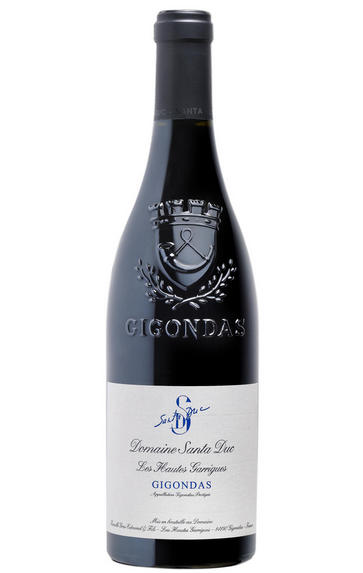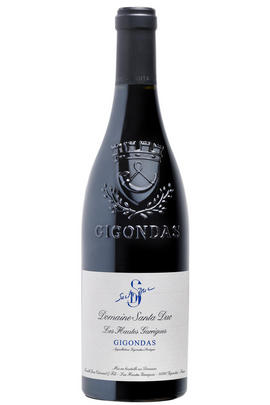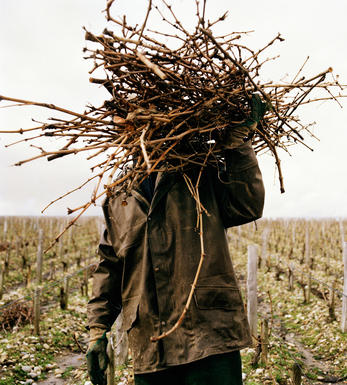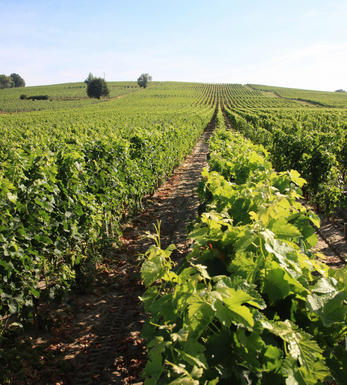
2011 Gigondas, Prestige des Hautes Garrigues, Domaine Santa Duc, Rhône

Critics reviews
Jeb Dunnuck - 30/12/2013
Several years ago Yves Gras purchased some hectares from Paul Jeune (the proprietor of Mont Pertuis) in the renowned La Crau sector of Chateauneuf du Pape, and his first two efforts are noteworthy. Under the negociant label called Santa Duc Selections, Gras produces some delicious white wines that merit attention from consumers.
They are generally blends of Bourboulenc, Grenache Blanc, Clairette and Viognier. Yves Gras is also the winemaker for Patricia Wells, who has a home and cooking school in Vaison La Romaine, a few miles north of Gigondas. Her estate is called Clos Chanteduc. The Domaine Santa Duc produces a Cotes du Rhone called Les Quatres Terres, which is a 4,000-case blend of 70% Grenache, 25% Syrah and the rest Counoise and Mourvedre.
Robert Parker, Wine Advocate #204, Dec 2012
About this WINE

Domaine Santa Duc
Domaine Santa Duc is one of the reference points of winemaking in Gigondas as well as one of the model estates in the southern Rhone
Santa Duc was founded in 1874 in Gigondas. Duc is the name of an owl, which has sensibly selected Provence as its preferred home. The Duke of Gigondas is the irrepressible Yves Gras, the 4th generation of winemakers at the property, whose aspiration is to forge an identity for this Medieval appellation that sets it apart from all of its neighbours.
The domain has 13 ha in Gigondas and 10 ha in the Rhone Villages wine appellations of Rasteau, Cairanne, Sablet and also produces some of the best buys in Cotes du Rhone (Les Quatres Terres), a Vin du Pays de Vaucluse and a Cotes de Ventoux Blanc.
The range of Gigondas cuvess at Domaine Santa Duc includes the Cuvee Tradition and Les Hautes Garrigues (made in only the best vintages) and in 2007 a new, 100% Grenache, limited production (4,000-bottles - from 80yo vines) cuvee (Gigondas 66) has been released.
All three of these Gigondas are thrilling wines of top-notch quality. They set reference points for what Gigondas can be.

Gigondas
Gigondas has been renowned for the quality of its wines since Roman times, although it was not really until it was classified as a Côtes du Rhône Villages in 1966 that it began to realise its potential. It achieved AC status in 1971 and today produces some of the finest, most underrated and under-priced wines in the Rhône valley; although, for the last two of these at least, probably not for much longer.
Gigondas' 1,200-hectare of rugged vineyards are located east of Châteauneuf-du-Pape, beneath the famous mountains of Dentelles de Montmirail. Gigondas produces sumptuous, plummy reds with a good structure and a sprinkle of pepper. It is similar to (if a touch less slick than) good Châteauneuf-du-Pape which, at its best, it can challenge and even surpass.
Made with a maximum of 80 percent Grenache, combined with at least 15 percent Syrah and/or Mourvèdre, the rest can be made of any of the varieties authorized for Côtes du Rhône – apart from Carignan. The wines can normally be broached after two to three years, while the best repay ageing for 10 years or more. The region also produces dry, Grenache-dominated rosés which are good but can sometimes lack a little vitality.
Recommended Producer: La Bastide St Vincent, Domaine Montirius

Southern Rhône Blend
The vast majority of wines from the Southern Rhône are blends. There are 5 main black varieties, although others are used and the most famous wine of the region, Châteauneuf du Pape, can be made from as many as 13 different varieties. Grenache is the most important grape in the southern Rhône - it contributes alcohol, warmth and gentle juicy fruit and is an ideal base wine in the blend. Plantings of Syrah in the southern Rhône have risen dramatically in the last decade and it is an increasingly important component in blends. It rarely attains the heights that it does in the North but adds colour, backbone, tannins and soft ripe fruit to the blend.
The much-maligned Carignan has been on the retreat recently but is still included in many blends - the best old vines can add colour, body and spicy fruits. Cinsault is also backtracking but, if yields are restricted, can produce moderately well-coloured wines adding pleasant-light fruit to red and rosé blends. Finally, Mourvèdre, a grape from Bandol on the Mediterranean coast, has recently become an increasingly significant component of Southern Rhône blends - it often struggles to ripen fully but can add acidity, ripe spicy berry fruits and hints of tobacco to blends.


Buying options
Add to wishlist
Description
For those who like to equate the style of a wine with the personality of the winemaker, the imposing and often outspoken Yves Gras would seem to be the ideal porte parole for the reputedly tannic and unforgiving wines of Gigondas. Needless to say such simplifications are facile; Yves turns out to be a thoughtful winemaker and the wines have a cerebral elegance… on second thoughts maybe the equation may not be too facile after all.
Yves’s top Grenache is only made in the best years, demonstrating his affection for 2011 which he praises for its purity and (relative) approachability. The latter quality is not immediately obvious such is the power and concentration that has been coaxed from these higher vines. The rewards of patience will be great indeed.
wine at a glance
Delivery and quality guarantee